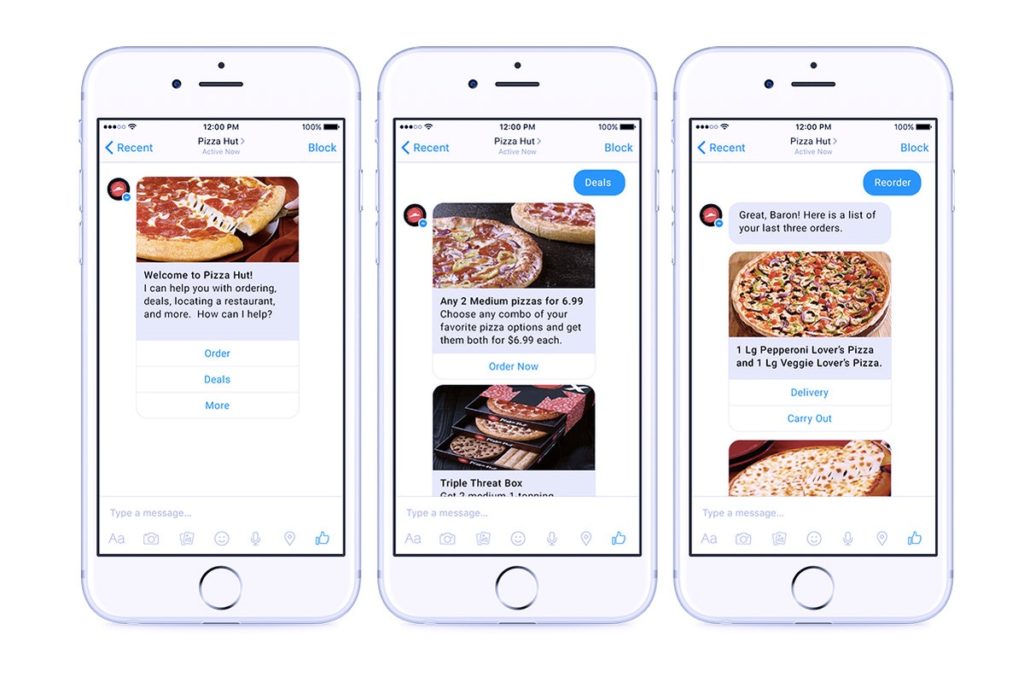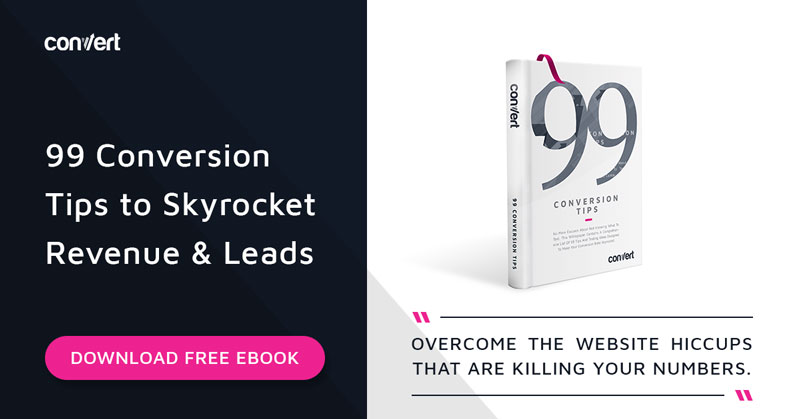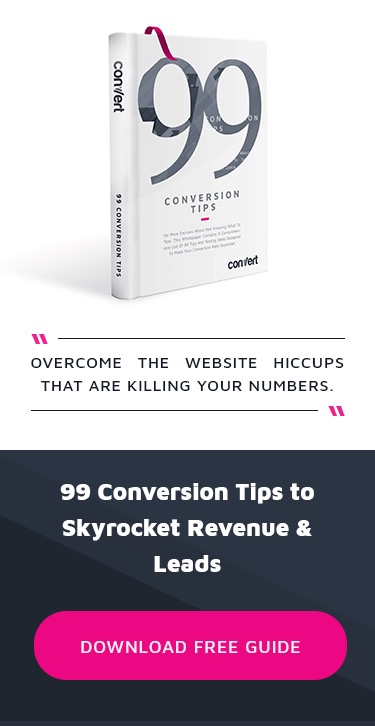4 Proven Conversion Rate Optimization Strategies You Should Try Today

What is Conversion Rate Optimization (CRO)?
Let’s start with a definition: Conversion Rate Optimization or CRO is the use of analytics and user feedback to improve the percentage (i.e the conversion rate) of website visitors who take a desired action or, in other words, who convert.
But what is a conversion? Anyone who performs such a desired action is considered a conversion. These can come in all shapes and sizes, but there are two main categories: macro- and micro-conversions.
Purchasing a pair of shoes, asking for a quote on new car or subscribing to a service such as Spotify are all macro-conversions. They contribute to the primary goals of a business, often generating profit.
The second category, micro-conversion, are smaller conversions that move the website visitor closer to a macro-conversion. For example: creating a free Spotify account or subscribing to a car brand’s email list.
Why invest in CRO?
There are two big reasons why you should invest in CRO:
- Get the most bang for your buck. If you are like most online businesses, you will be paying for some of your traffic (Paid search, social media advertising,…). A higher conversion rate on that traffic would get you a better return on investment.
- Depending on the study you consult or the business you’re in, acquiring a new customer is anywhere from five to 25 times more expensive than retaining an existing one. It’s much more cost-effective to convert a higher percentage of the visitors you already have than to attract more visitors.
It’s important to understand, however, that optimization is about getting more of the right kind of customers, not just blindly optimizing the conversion rate of any page or campaign. Most sites follow the 80/20 rule, meaning that 20% of their website is generating 80% of their conversions. It’s those 20% you want to focus on.
And you can with the following strategies.
1. Convert High-Value Leads First
Most successful CRO strategies center around consumer or buyer intent.
Typically, visitors are divided into two groups: Top of funnel visitors (people who are still looking around) and bottom of funnel visitors (those who are close to making a purchase or decision).
This tactic is all about focusing on the latter group as these visitors are of much higher value for your business than top of funnel leads.
This may sound simple in theory, but in reality it’s not always that easy to figure out exactly where people are in your sales funnel.
This is where paid and organic search come in.
When someone is looking for something in particular, they will perform an online search. The terms they use to perform this search helps us identify them as someone who is either top or bottom of funnel, high or low buyer intent.
- “flat screen tv” – This is a generic term that is most likely used by customers in the early stages with low buyer intent.
- “compare flat screen tvs” – The desire to compare products indicates this customer is further along in the cycle.
- “sony 42” lcd” – This very specific product search query indicates that a shopper has a high buyer intent as he is now likely evaluating prices.
The next step is to create or optimize content that ranks well for these keywords and moves customers closer to a purchase. Ideally you should provide content for all intent stages, but since we’re aiming for the high-value leads first, your best bet is to direct them to an appealing landing page where they can buy the product they were looking for, in this case a 42 inch LCD TV.
Another way to drive high-value leads through the sales funnel is by using compliance psychology. Here’s how Olivia Ross, Director of CRO at Directive Consulting uses this approach: “Instead of having one page and one form to capture leads, you spread the form fields across two or more steps. So potential leads that visit the first page via your ads will fill in a short form and, after clicking the CTA button, they’re directed to the next step.
Take this multi-step form from Hubspot as an example:

The first step starts with the least personal questions that allow the visitor to stay anonymous, whereas the second (and possible additional steps) ask for more, (albeit) reasonable, personal information.
The reasoning behind this compliance psychology: people are more likely to finish something they’ve already started, and they’ll feel more comfortable with a form that makes them feel they will be getting a customer solution to their problem.”
2. Provide a Consistent Experience across all Channels
If a potential customer doesn’t get a consistent experience across all the channels, then you are not doing it right.
For example, you may have a fully functional website, but if it isn’t optimized for mobile, your mobile visitors who are looking for exactly the same thing as those who visit your site via a desktop, will have a lower conversion rate.
Offering a unified customer experience goes further than mere functionality, it’s in the tone of voice, branding, customer service, social media,… Every touchpoint should offer the same experience.
Facebook promotions look very different from newsletters, however there are ways to create a seamless experience for the user, so the two initiatives appeared linked and cohesive.

But what’s in it for you?
The more channels customers use, the more valuable they are. Multi-channel visitors spent an average of 4% more on every shopping occasion in the store and 10% more online than single-channel customers.
Even more compelling, with every additional channel they used, the shoppers spent more money in the store. For example, customers who used 4 or more channels spent on average 9% more in the store than those who used just one channel.
Getting your business on all possible channels will not work if they are working individually. Customers want to get the same information on the channel of their choice whether it’s via SMS, email, or one of the many social media channels.
That’s why it’s important to integrate all these channels and provide a consistent brand experience.
3. Offer Live Chat
The fact that live chat is on-site and real-time makes it the only channel that allows you to guide your visitors through your website so you can actively coach them along the conversion process. Any critical question can be resolved on-site and in real-time, before it puts customers off the purchase.
A case study from Userlike showed a 3.5 times higher conversion rate as well as a 15% higher average order value for customers who chatted compared to those who didn’t.

One major feature contributing to the higher conversion rate is the sign-up form, which asks web visitors to leave their name, email, and/or other information in order to start the chat. Creating a good-looking sign up form does not require technical knowledge, thanks to tools such as Hubspot’s form builder.
Especially when connected to a CRM tool like Pipedrive or Salesforce, this allows you to quickly collect leads that you can easily follow up on.
If you’re not able to give 24/7 chat support, it’s worth looking into Facebook Chatbots.
A chatbot is a piece of software that is either pre-programmed or powered by AI to hold conversations with human users.
Here are some statistics that prove how effective they are:
- Up to 85% of all customer-business interactions will take place without a human intermediary by 2020.
- Content delivered through Facebook Messenger had an open rate of 80% and a click rate of 13%. The same content delivered through email had an open rate of 33% and a click rate of 2.1%. In other words, email was completely outclassed by Messenger.
Here’s Facebook Chatbot example taken from Pizza Hut:

4. Set up a Long-Term Autoresponder
Every subscriber to your email list is, as we said at the start of the introduction, considered a micro-conversion. Here’s one tactic to guide these people to becoming a macro-conversion.
As soon as someone signs up, they should receive a first email thanking them. This email marks the start of your long-term autoresponder build to nurture and convert these leads.
What is an autoresponder?
An autoresponder is a sequence of emails that are automatically sent to a specific segment of people on your email list, triggered by a specific event, such as joining your list, browsing behavior, shopping cart abandonment, downloading a PDF, or buying a product.
The content of these email autoresponder series is created in advance, and set up to send at the appropriate time with the help of your email marketing software.

Take this autoresponder series from Backlinko as an example. The main goal is to make subscribers convert to his online SEO course. By sending out 7 emails over the course of a week, they try to stay top of mind and each email is build to convince you just a little bit more of the course’s value.
Bonus tip: Most sites have a simple signup form for their email list, which asks web visitors to leave their name, email, and/or other information in order to join the their email list. However, the more fields your form has, the bigger the hurdle to convert becomes.
Instead, try using a lead generation quiz, not only is it more engaging than a simple form, people become more invested which will decreases the number of bad email and a quiz allows you to segment your list so you can send an optimized autoresponder to every subscriber.
Vishveshwar Jatain, Senior Content Strategist for AdPushup Inc used this tactic as well. Here’s what he said: “Product companies often use “leads magnets” such as eBooks, white papers, guides to generate new leads. We crafted an 15-day email autoresponder course that teaches subscribers the basics of the ad tech industry.
Then we set up a sign-up form as a CTA to collect leads. Over the course of the last year, this has helped us generate 1000+ new leads. The important thing to note is that these leads are of higher-than-average quality because people seem more willing to share their official work email when signing up for learning products.”
Now What?
In essence, CRO means figuring out what users are looking for when they come across your brand and then giving them what they need. There’s wide plethora of CRO tactics you could try to achieve this.
While it’s always fun to experiment with new and exciting tactics, one thing to keep in mind is to use A/B or multivariate testing with a control page (the current version) to measure their impact. Trying out something one week and doing something else the next without a control group can give you biased data and terrible insights.


